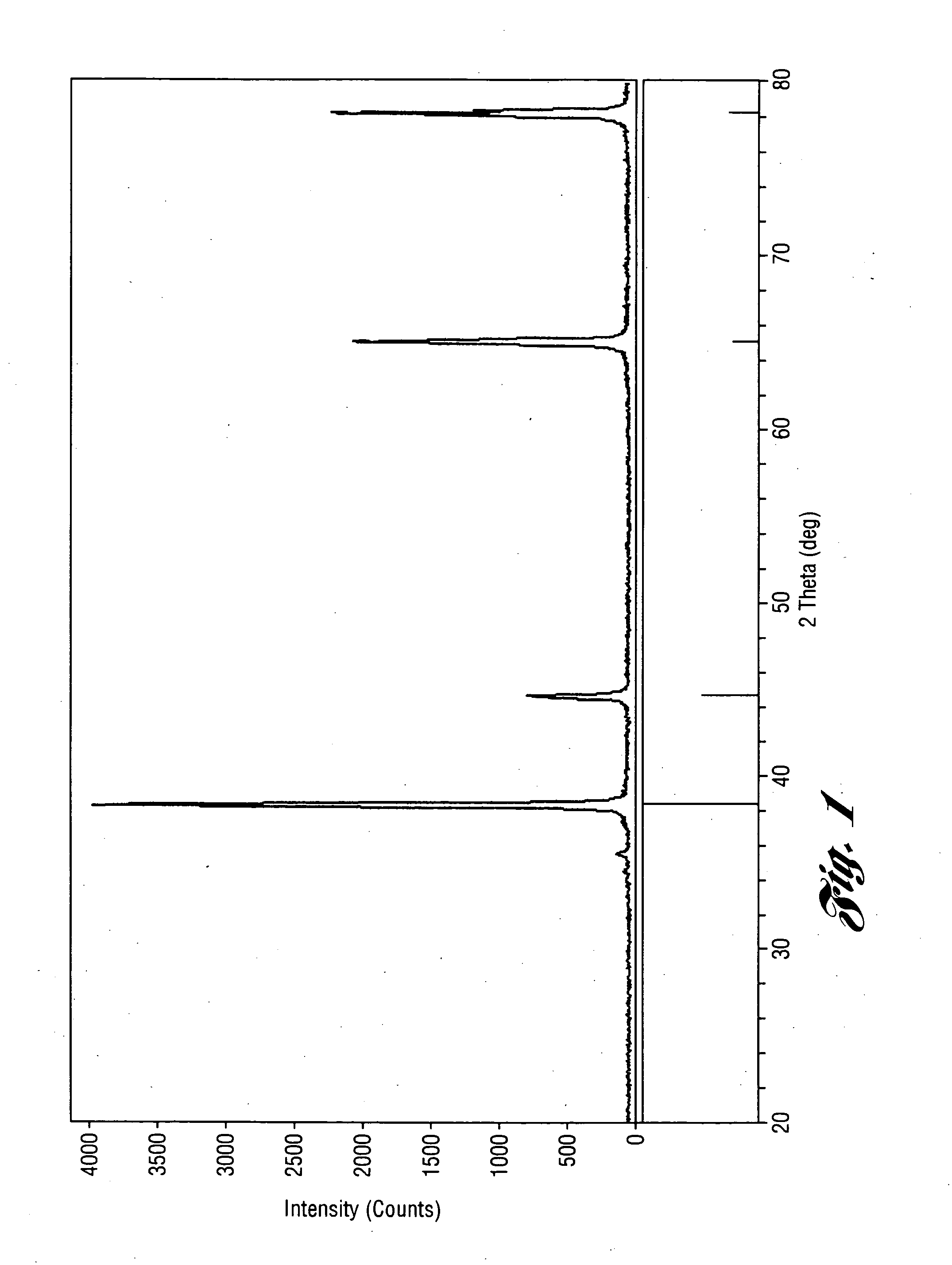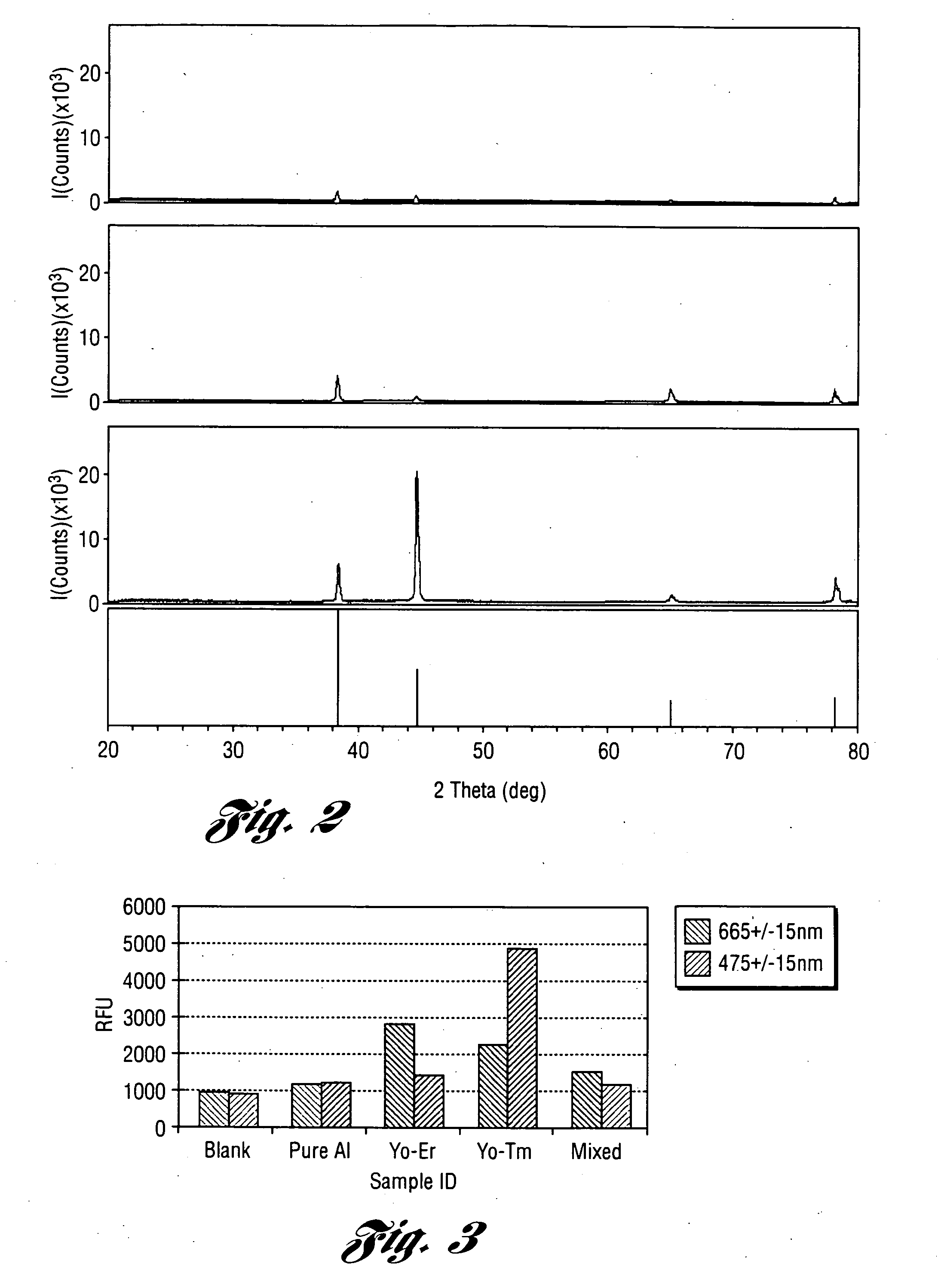Process for tagging of manufactured articles with up-and down-converting metal oxide nanophosphors and articles produced thereby
a technology of metal oxide nanophosphors and tagging process, which is applied in the field of tagging of manufactured articles, can solve the problems of not being suitable for certain applications, the complexity of security measures has increased, and it is possible to substantially duplicate such devices by other manufacturers
- Summary
- Abstract
- Description
- Claims
- Application Information
AI Technical Summary
Problems solved by technology
Method used
Image
Examples
example 1
[0040] 4.00 g of “Ecka aluminum” particles ranging in size from 250-500 nm and having a purity of ≧99.3%, available from Eckart Aluminum, Australia, was milled in a high-energy planetary rotation ball mill (SPEX CertiPrep 020 mixer / mill) with 4.00 g of an up-converting taggant of alumina / yttria of composition MxYbyY2-x-yO3, where M is Er, x is from 0.66-0.8 and y is from 0.04-0.02, available from TAL Materials, Ann Arbor, Mich., and having an average particle size of less than 100 nm. The mixing chamber was a stainless steel cylinder with internal volume of 85 cm3, and 32 g of stainless steel milling media of various sizes were added. The cylinder was flushed with Ar and sealed. The Ar flush ensures that no oxidation takes place during milling. The mill was run for 2.5 hours, and the resulting relatively homogenous powder was separated from the milling media. This process is repeated five times to produce 40.00 g of aluminum / taggant master batch.
[0041] From the master batch, a “mas...
example 2
[0043] The powder of Example 1 is followed, except that the nanoparticles are doped with Tm instead of Er.
example 3
[0044] While still molten, one half of the taggant-laden aluminum of Example 1 was mixed with one half the taggant-laden aluminum of Example 2 to form aluminum containing both taggants.
PUM
| Property | Measurement | Unit |
|---|---|---|
| size | aaaaa | aaaaa |
| size | aaaaa | aaaaa |
| size | aaaaa | aaaaa |
Abstract
Description
Claims
Application Information
 Login to View More
Login to View More - R&D
- Intellectual Property
- Life Sciences
- Materials
- Tech Scout
- Unparalleled Data Quality
- Higher Quality Content
- 60% Fewer Hallucinations
Browse by: Latest US Patents, China's latest patents, Technical Efficacy Thesaurus, Application Domain, Technology Topic, Popular Technical Reports.
© 2025 PatSnap. All rights reserved.Legal|Privacy policy|Modern Slavery Act Transparency Statement|Sitemap|About US| Contact US: help@patsnap.com


